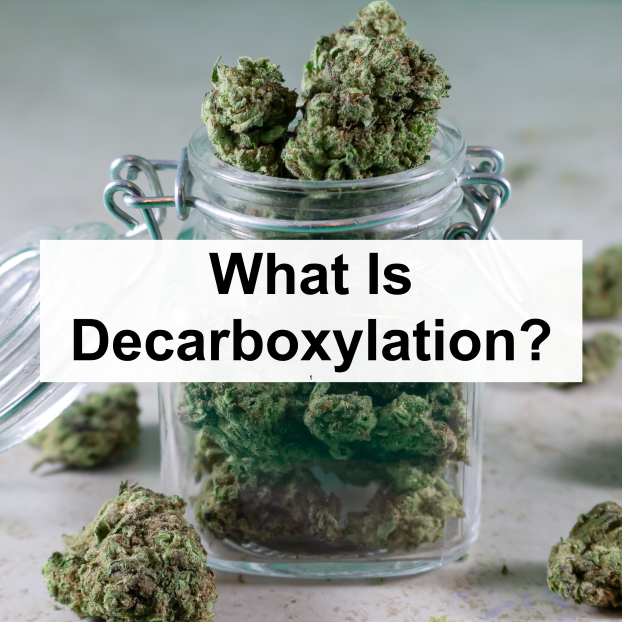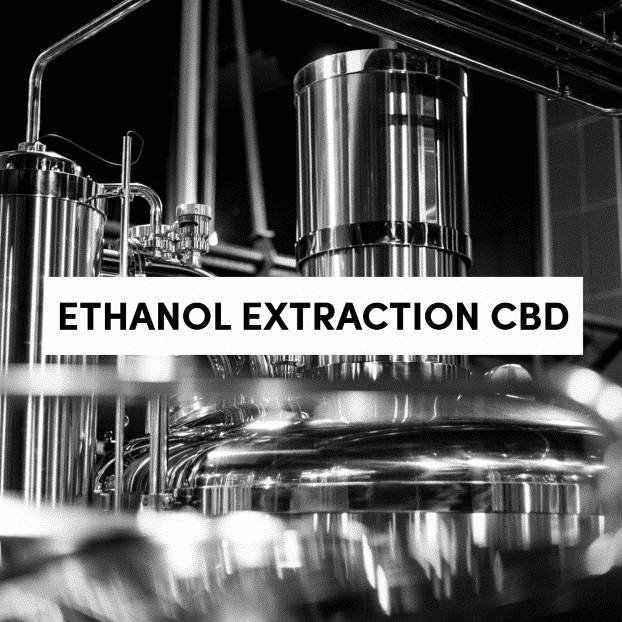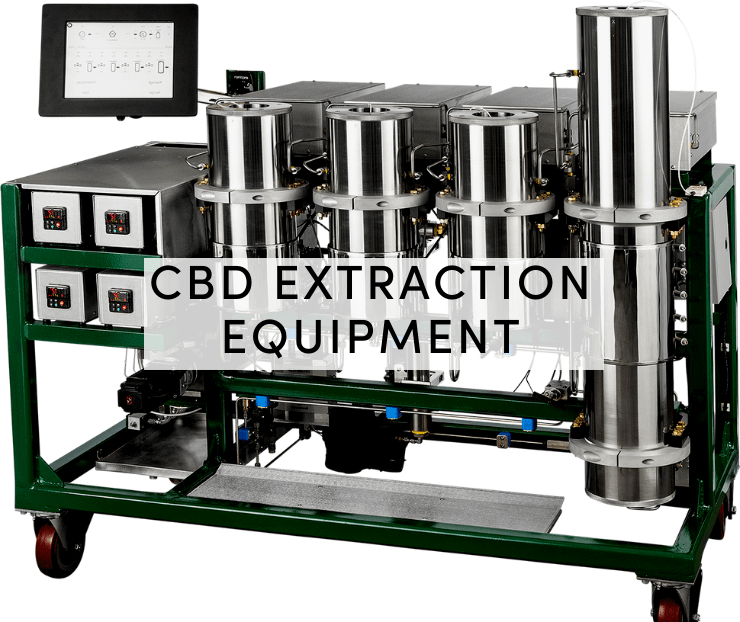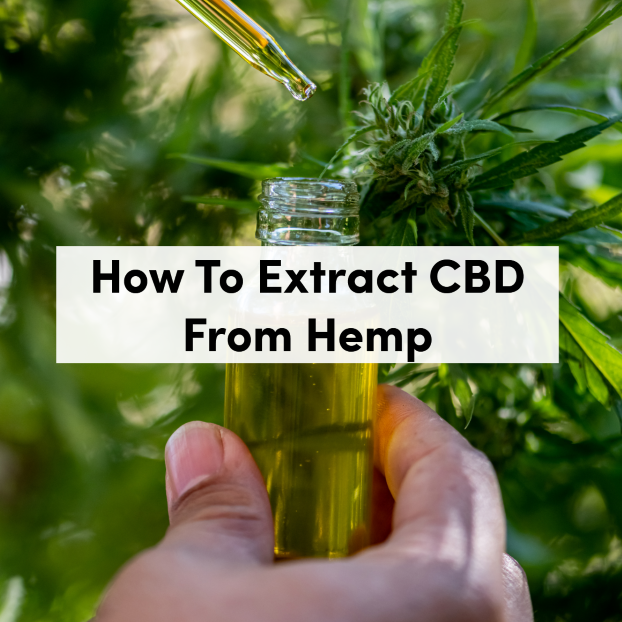What Is Decarboxylation of THCA?

Posted on August 5th, 2021
Why is decarboxylation of THCA so important to your final cannabis product? Here’s what you need to know!
Phytocannabinoids are the cannabinoids that come from plants, such as THC, CBD, and most other cannabinoids you’ve heard about. Most of them are naturally occurring chemical compounds found inside the cannabis plant. However, what most don’t really know is that, inside the raw cannabis plant itself, these molecules are practically non-existent. Rather than CBD or THC, fresh cannabis plant contains the acidic precursors to these cannabinoids. Acidic versions of the cannabinoids we know so well do not have the same effects associated with their later, non-acidic versions. This is the reason why ingesting an entire bag of raw cannabis will not actually give you an intense ‘high’ as cured cannabis would. Nevertheless, researchers are still looking into the exact effects, and potential the acidic counterpart of cannabis might have.
The acidic precursor to CBD is cannabidiolic acid or CBDA. On the other hand, the acidic precursor to THC is tetrahydrocannabinolic acid (THCA). One way to convert these acidic compounds to the active cannabinoids that we’ve come to love is through a process known as decarboxylation of THCA.
So, what is Decarboxylation?

Decarboxylation, otherwise referred to as ‘decarbing,’ is the process of removing a carboxyl group from a compound’s molecular structure. When it comes to cannabis, decarboxylation removes the carboxyl group from THCA, CBDA, and other acidic precursors. Thus, it converts those acidic compounds into their pharmacologically active counterparts like THC or CBD.
Heat and time would be the two main catalysts of the decarboxylation process. You can see a good example of this occur when raw marijuana or hemp is left to dry for an extended time. The naturally present CBDA and THCA will start to slowly decarboxylate on its own. This would be the reason why people could feel a similar effect to those of THC and CBD when ingesting long dried raw cannabis.
You yourself might have done decarboxylation at some point. Since heat is the primary catalyst of the decarboxylation process, by smoking or vaping cannabis, you instantaneously decarboxylate it. The THCA and CBDA inside of it instantly convert into THC and CBD. Smoking and vaping are all-in-one techniques; they provide a way to decarboxylate your cannabis and consuming it as well. You could also cook your cannabis under certain temperatures for a while to decarboxylate it. Consuming it afterward will give you the effects of activated cannabinoids as well.
What is Decarboxylation of THCA? How the Process Works
As you might know, CBD and THC produce their effects on the body by interacting with the body’s endocannabinoid system (ECS). However, their acidic precursors have slightly different molecular structures that prevent them from delivering the same effects.
These acidic molecules would need to undergo some alterations in order to finally deliver the effects cannabis is famous for. This is what decarboxylation does.
For a better perspective, consider this:
THCA or CBDA molecules contain 22 carbon atoms, 30 hydrogen atoms, and four oxygen atoms. Such molecules are too large to fit in our cannabinoid receptors. However, after exposure to heat, the molecule loses one carbon atom and two oxygen atoms. Thus, THCA becomes THC and CBDA becomes CBD. The loss of one carbon atom and two oxygen atoms means that the process will release carbon dioxide (CO2).
Why is it Necessary to Decarboxylate CBD?
While research is still ongoing on the potential benefits of CBDA, some studies suggest that CBDA has some benefits of its own. However, CBD still remains the most popular and most sought-after product of the two. This is because the process of decarboxylation activates the CBD and unlocks all of its therapeutic properties.
Now, if you are going to consume a cannabis product in any other way than smoking or vaping, should it undergo decarboxylation first? If what you are looking for is to get the exact effects of a cannabinoid like CBD, then yes. Decarboxylation is a necessary step to create an actual CBD product like CBD oil.
Thus, if you are looking to get the most out of your CBD, decarboxylation is necessary. Also, unlike THC, CBD is non-intoxicating both in its non-decarboxylated and decarboxylated form.
Almost all CBD products available on the market are decarboxylated at some point between harvesting and retailing as a finished product. As you might be aware CBD-rich products are made from oil extracts derived from the hemp variety of cannabis.
The process of decarboxylation happens before or after the extraction of CBD rich oil. Typically, companies prefer to decarboxylate their CBD before extraction. This allows for a more efficient extraction with higher yields.
What About the Acidic Cannabinoids? Are They Useful?
Having said all that, there are also CBDA products that retain the acidic form of the cannabinoids and have different effects. These, however, are harder to find. Some of the potential individual benefits of CBDA include:
- Helping nausea and vomiting.
- Potential to prevent breast cancer cell migration.
- Alleviating pain and inflammation.
- Reducing anxiety.
- Reducing seizures.
While some of the effects are akin to CBD’s, the intensity of them varies between both compounds. These days, researchers are still hard at work looking deeper into the acidic forms of cannabinoids to see just how much more benefits they hold.
Decarboxylating THCA or CBD at Home?
Now, are you wondering if you could do decarboxylation by yourself at home? Well, decarbing CBD is an easy process; you can actually do it on your own. Let’s have a look at some common techniques used to decarboxylate CBD. However, it is important to note that some of these techniques will require some trial and error. You are going to have to hit the perfect temperature and time required for the decarboxylation of each type of cannabinoid.
For instance, CBD requires a slightly higher temperature and a longer time to decarb than THC. However, temperatures exceeding 300 degrees will cause the cannabinoids and terpenes to completely degrade. Thus, it is important to maintain the perfect temperatures and time intervals to get the best results.
Decarboxylation of THCA by Curing
While this is one of the easiest methods of decarbing your cannabis, it is also the slowest. This process involves laying out your trimmed cannabis leaves and flowers to dry. With time, the acidic compounds will start to break down and become their respective active counterparts.
Decarbing By Heating
Exposing your cannabis to heat is the fastest and most effective way of decarbing it. There are different techniques for achieving this:
Smoking or Vaping
This is arguably the easiest method of decarboxylating your cannabis. Whether you are looking to gain the intoxicating effect of marijuana or the therapeutic benefits of CBD-rich hemp, smoking/vaping allows you to instantaneously decarb your cannabis and ingest it immediately.
Baking it in an Oven
For this technique, all you need is some dried cannabis flower, a baking sheet, and an oven. Start by preheating your oven to 200-300 degrees Fahrenheit – the lower the temperature, the better.
Next, break up the cannabis buds into tiny pieces and spread them out evenly on the baking sheet in a single layer. This will allow them to heat up all the way through.
Next, place the baking sheet and its content in the oven and bake for 30 to 40 minutes.
Remove the cannabis from the oven once it turns from green to medium brown.
Your decarboxylated cannabis is now ready for infusion, sprinkling, or mixing into edibles and extracts.
The Sous-Vide Method
The Sous-Vide technique is the safest method for decarbing your cannabis. It gives total control over the heating time and temperature. This technique requires a sous-vide precision cooker, a grinder, a vacuum sealer, heat-safe plastic packaging, and a 10-quart pot.
Start by grinding the cannabis plant material into a coarse grain, then seal it in heat-safe plastic packaging.
Next, fill the pot with water and heat it on a stovetop. Place the sous-vide precision cooker inside the pot and set the temperature at about 230 degrees Fahrenheit. After the water hits the required temperature, place the heat-safe plastic bag with the cannabis inside the precision cooker. Allow it to cook for approximately one and a half hours.
Specialized Decarboxylation Device
There are devices specifically designed for cannabis decarboxylating purposes. Most CBD product manufacturers use large decarboxylating ovens to activate larger batches. However, you can also find compact decarboxylating devices for at-home hemp and marijuana decarboxylation.
Can One Use A Microwave to Decarb Cannabis?
While some users make use of their microwaves to decarb their marijuana or hemp, it is not a recommended method. It will generate decarbing temperatures that will be higher than what’s recommended. Some tout it as a fast and easy way of decarbing your cannabis. However, there is a high chance of ending up with a burnt product of reduced potency and awful smell and flavor. If you are going to use a microwave, don’t expect the process to go smoothly.
What is Decarboxylation? – The Takeaway
While you could certainly consume the raw cannabis or smoke/vape it as well, decarboxylation is entirely necessary to get most presentations of cannabinoid products. Isolating CBD to get most CBD products actually requires decarboxylating CBDA beforehand without exception. Thus, decarboxylation is a crucial step responsible for delivering your favorite cannabinoids and unlocking all of their benefits.





